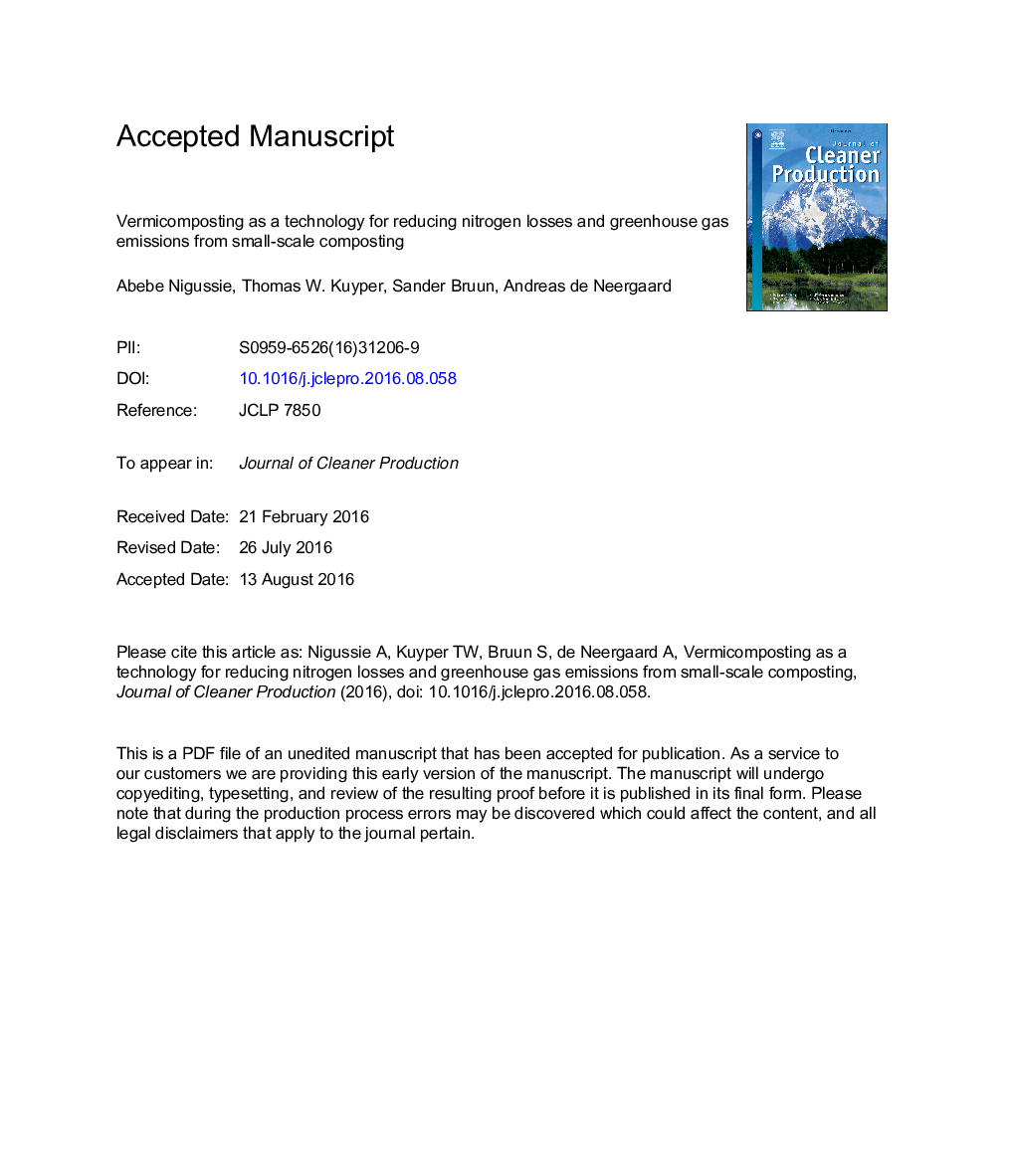| کد مقاله | کد نشریه | سال انتشار | مقاله انگلیسی | نسخه تمام متن |
|---|---|---|---|---|
| 8100577 | 1522113 | 2016 | 34 صفحه PDF | دانلود رایگان |
عنوان انگلیسی مقاله ISI
Vermicomposting as a technology for reducing nitrogen losses and greenhouse gas emissions from small-scale composting
ترجمه فارسی عنوان
ورمی کمپوستینگ به عنوان یک تکنولوژی برای کاهش تلفات نیتروژن و انتشار گازهای گلخانه ای از کمپوست در مقیاس کوچک
دانلود مقاله + سفارش ترجمه
دانلود مقاله ISI انگلیسی
رایگان برای ایرانیان
کلمات کلیدی
کمپوست ترموفیلی، ورمی کمپوستینگ، کیفیت پایه، کرم خاکی،
موضوعات مرتبط
مهندسی و علوم پایه
مهندسی انرژی
انرژی های تجدید پذیر، توسعه پایدار و محیط زیست
چکیده انگلیسی
Thermophilic composting produces a significant amount of greenhouse gases. The objectives of this study were (i) to evaluate the effectiveness of vermicomposting to reduce nitrogen losses and greenhouse gases emissions compared to thermophilic composting, and (ii) to determine the effect of different variables (i.e. carbon:nitrogen ratio, earthworm density, moisture content and carbon quality) on greenhouse gases emissions and earthworm growth during vermicomposting. The results showed that vermicomposting significantly reduced nitrogen loss by 10-20% compared to thermophilic composting. Vermicomposting decreased nitrous oxide emissions by 25-36% and methane emissions by 22-26%. A higher earthworm density increased carbon dioxide emissions by 3-14%, but decreased methane emissions by 10-35%. Earthworm density had a marginal effect on nitrous oxide emissions. Vermicomposting decreased nitrous oxide emissions by 40% with higher moisture and by 23% with lower moisture. Vermicomposting also decreased methane emissions by 32% and 16% with higher and lower moistures respectively. This study showed that the addition of labile carbon sources increased carbon dioxide and methane emissions and earthworm growth, but did not affect nitrous oxide emissions. In conclusion, vermicomposting is effective at reducing nitrogen losses and greenhouse gas emissions from composting. Therefore, vermicomposting could represent an option for reducing greenhouse gas emissions from composting, particularly in developing countries where the existing technical solutions are expensive and difficult to implement.
ناشر
Database: Elsevier - ScienceDirect (ساینس دایرکت)
Journal: Journal of Cleaner Production - Volume 139, 15 December 2016, Pages 429-439
Journal: Journal of Cleaner Production - Volume 139, 15 December 2016, Pages 429-439
نویسندگان
Abebe Nigussie, Thomas W. Kuyper, Sander Bruun, Andreas de Neergaard,
